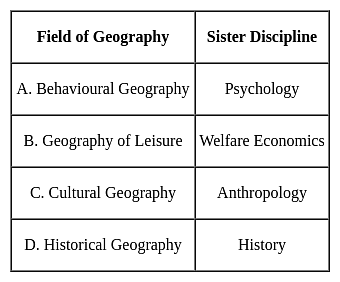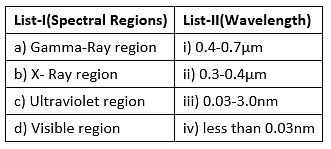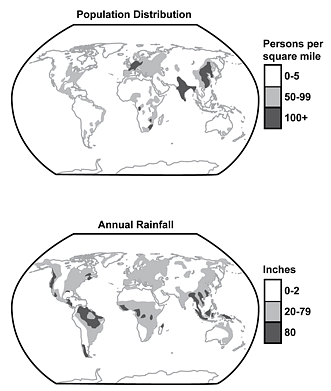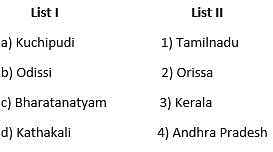UGC NET Paper 2 Geography Mock Test - 9 - UGC NET MCQ
30 Questions MCQ Test UGC NET Mock Test Series 2024 - UGC NET Paper 2 Geography Mock Test - 9
Which is of the following is negative consequence of migration?
I. It put pressure on social and physical infrastructure in the urban areas
II. It creates anonymity, which creates social vacuum and sense of dejection among individuals
III. Remittances from the international migrants are one of the major sources of foreign exchange
Consider the following statements:
1. Indian Mahogany species is well-known for its dense, redwood.
2. Mahogany can be found in almost every part of India.
3. Indian scientists discovered that the mahogany tree emits a sulphur compound that can help to reduce atmospheric warming caused by greenhouse gases.
4. Mahogany is considered a Mesophyte.
5. It is a fast-growing upright tree with an outwardly rounded symmetrical crown.
How many of the above statements are correct?
| 1 Crore+ students have signed up on EduRev. Have you? Download the App |
Himalayan Yew is an important plant for medicinal plants found in various parts of Himachal Pradesh and Arunachal Pradesh. It has been characterized as endangered by IUCN due to
1. Depletion of an inter-species gene bank of Yew.
2. Threat of bio-piracy.
3. Soaking of groundwater in areas where it is present.
Given below are two statements. One is labelled as Assertion (A) and the other is labelled as Reason (R).
Assertion(A) : Unsupervised Classification normally requires only a minimal amount of input from the analyst.Reason(R) : A priori knowledge of the scene or training sites are required to run this classification.
Select the correct answer from options given below :
Consider the following statements and choose the correct option.
(A) An economically developed country could be a densely populated country.
(B) More women in population's base necessarily indicates their better status in society.
(C) Population pyramid is a tool to study the population composition of a country.
Given below are two statements:
Statement I: Grid-cell systems are very compatible with raster-based output devices
Statement II: Vectors use maximum space for storage of spatial data
In the light of the above statements, choose the most appropriate answer from the options given below:What is the wind direction in a cyclone in southern hemisphere ?
Which of the following is not correctly matched?

For finding Mode from formula class interval should be
Critics of the Malthusian Theory argue that advancements in which field have mitigated the challenges predicted by Malthus?
According to Malthus, what are preventive checks in the context of population control?
What is the primary assertion of the Malthusian Theory of Population?
Match the List-I with List-II two.

Choose the correct answer form the code given below:
Assertion (A): The temperature increases in the stratosphere.
Reason (R) : The boundary between stratosphere and mesosphere is called as stratopause.
Select the correct answer from options given below:
(a) The western coast of Mahrashtra is the region most prone to cyclonic storms.
(b) The river Chambal in the North Indian plain is susceptible to frequent flooding.
(c) The north-eastern states lie in the earthquake prone region.
(d) The eastern coast of India has most vulnerability to cyclones.
Two statements are given below. One is Assertion (A) and other is Reason (R):
Assertion(A)-El-Nino causes change in atmospheric circulation and water temperature.
Reasoning(R)-There is an increased Rainfall in eastern pacific.
Choose the correct answer:
Assertion (A): The gradual increase in depth of river valleys has occurred in the youthful stage of rivers.
Reason (R): The channel gradient is steep in the youthful stage of the river.
Which of the following statements is NOT true?
Use the maps below to answer the question that follows.

Which of the following statements most accurately interprets information shown in the two maps?
Match list I correctly with list II and select your answer using the codes given below

|
16 docs|120 tests
|





















